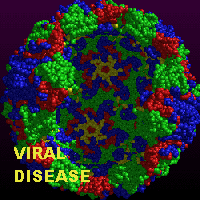
OVERVIEW

OVERVIEW
When people (especially those younger than 30) think about viral disease, their first thought turns to the HIV virus which causes AIDS or the recent Ebola virus outbreaks in Africa, which have some vividly been portrayed in recent films and books. From a world-wide perspective, AIDS is a devasting plague. In Africa, populations of entire countries will decrease over the next decade due to the AIDS pandemic. In Botswana,where the life expectancy 5 years ago was in the low 60's, life expectancy in the years 2000-2005 will plummet to around 40. 86% of HIV infections in the world are found in sub-Saharan Africa, as are 91% of all AIDS-related deaths. In the US, however, the number of deaths from this dreaded disease have decreased over the last few years, primarily a result of new drug therapies. In 1997, 16,685 people died of HIV and AIDS in this country. This comparies to 725,790 that died of heart diseae and 537,390 who died of cancer. These figures, however, mask the potential impact of viral disease. Consider for example, the great influenza pandemic of 1918-19, caused by the influenza virus) which killed between 20 and 40 million people world wide, more than in all of World War I. Not only that, viral infections have recently being associated with other human diseases including multiple sclerosis,myastenia gravis, insulin-dependent diabetes, cardiovascular disease, and possibly some psychiatric illnesses, in addition to diseases such as the common cold. What are viruses, how do they act, and how can they cause or be associated with such a variety of diseases?